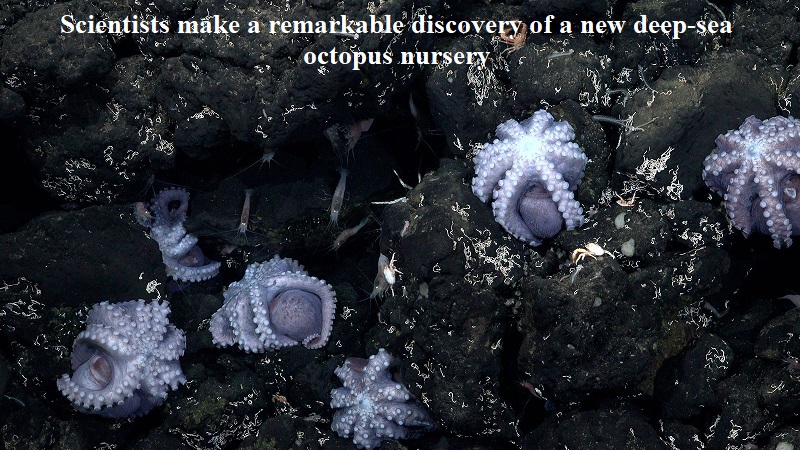
A team of international scientists has made an extraordinary discovery of a new deep-sea octopus nursery near Costa Rica’s coast, located at a low-temperature hydrothermal vent. This finding brings the total number of known octopus nurseries in the world to three.
According to the Schmidt Ocean Institute website, the researchers have also confirmed that the Dorado Outcrop, previously identified as a gathering site for deep-sea octopuses, is indeed an active nursery.
The octopus species found in the nursery is believed to potentially be a new species of Muusoctopus, a genus of small to medium-sized octopuses that do not possess an ink sac.
Moreover, the expedition has provided evidence supporting the idea that certain deep-sea octopus species specifically seek out low-temperature hydrothermal vents for brooding their eggs. The site where the nursery was discovered featured low-temperature hydrothermal venting at approximately seven degrees Celsius.
Led by Dr. Beth Orcutt of the Bigelow Laboratory for Ocean Sciences and Dr. Jorge Cortes of the University of Costa Rica, the 19-day Octopus Odyssey expedition involved a team of 18 researchers from different countries who conducted their research aboard the research vessel Falkor.
During the expedition, the researchers discovered an unnamed outcrop that had not been explored before, where they observed brooding octopuses. They also witnessed the hatching of Muusoctopus octopuses, which helped dispel doubts about the suitability of the conditions at the Dorado Outcrop for octopus growth.
The researchers utilized the ROV SuBastian, an underwater robot, to observe the seamounts and baby octopuses. The live dives were made accessible to the public in real-time through the live stream provided by the Schmidt Ocean Institute.
In addition to the octopus nursery discovery, the expedition explored five previously unknown seamounts in the northwestern region of Costa Rica’s waters. These seamounts exhibited thriving biodiversity, and the researchers believe that many of the hundreds of animal species observed there may be new to science.
Dr. Jyotika Virmani, Executive Director of the Schmidt Ocean Institute, emphasized the importance of this discovery and highlighted the ongoing need to explore and understand our oceans.
The seamounts, including the Dorado Outcrop, currently lack protection from human activities like fishing. Half of the team involved in the expedition consisted of Costa Rican scientists, who are reportedly assessing the need for protective measures and the potential designation of marine protected areas for these seamounts.
Further laboratory examinations will be conducted on sediment push cores, which hold valuable stratigraphic data about the seafloor and offer insights into microbial life.
Dr. Cortes expressed that this expedition not only provided significant scientific data and samples but also served as an opportunity to raise awareness about the deep-sea ecosystems in Costa Rica and the importance of their conservation.

Post Your Comments